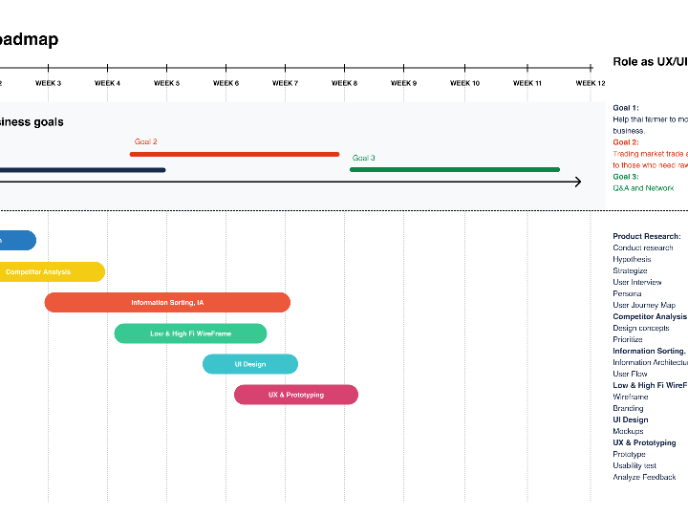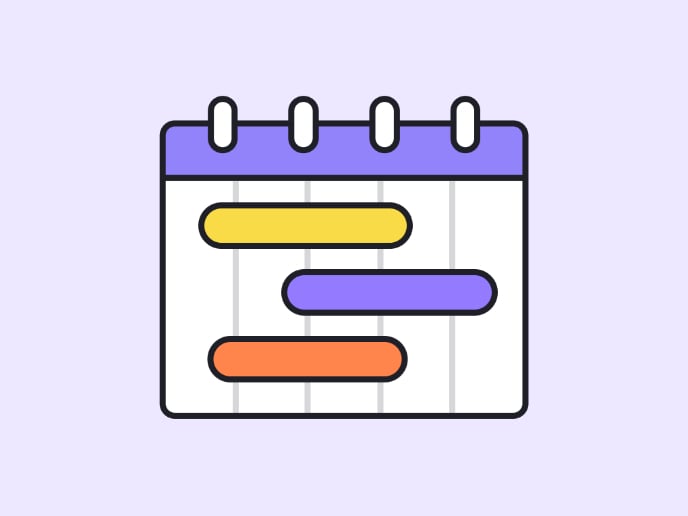Product Roadmap
A product roadmap outlines planned work across time, showing goals, key initiatives, and expected delivery to guide team through stages of development.

What is Product Roadmap?
Your development team doesn't know what to build next, stakeholders constantly ask about feature timelines, and strategic priorities keep changing without clear communication about direction or rationale. You've probably experienced the chaos of teams working on conflicting priorities without shared understanding of product vision.
Most product roadmaps fail because they become detailed project plans that break when priorities change, rather than strategic communication tools that align teams around outcomes and direction.
Product roadmap is the strategic visual communication tool that shows how a product will evolve over time to achieve business objectives, connecting current capabilities to future vision through prioritized initiatives, timeline guidance, and outcome focus that aligns teams and stakeholders around shared direction.
Teams with effective roadmaps achieve 40% better stakeholder alignment, 30% faster development velocity, and significantly reduced scope creep because everyone understands priorities and strategic direction.
Think about how companies like Spotify communicate music platform evolution through roadmaps that balance user experience improvements, creator tools, and platform capabilities, or how Slack shows collaboration platform development that serves different customer segments and use cases.
Why Product Roadmap Matters for Team Alignment
Your team lacks strategic direction, stakeholders have unrealistic expectations about delivery timelines, and development efforts aren't aligned with business objectives because there's no shared understanding of priorities and direction.
The cost of poor roadmapping compounds across every development cycle. You get conflicting priorities, wasted development effort, stakeholder frustration from unmet expectations, and competitive disadvantage from slower execution on strategic initiatives.
What effective product roadmapping delivers:
Better strategic alignment because roadmaps create shared understanding of priorities, timeline expectations, and outcome objectives that guide decision-making across all team members.
When everyone understands what you're building and why, teams make better daily decisions that support strategic objectives instead of just completing assigned tasks.
Improved stakeholder communication through visual representation of product evolution that sets appropriate expectations about timing while maintaining focus on outcomes rather than specific features.
Enhanced prioritization discipline as roadmap development forces explicit choices about what to build first, what to delay, and what not to do based on strategic objectives and resource constraints.
Faster development velocity because clear direction reduces decision paralysis, context switching, and rework that slows teams down when priorities are unclear or constantly changing.
Better resource planning as roadmaps enable capacity planning, skill development, and tool acquisition that support upcoming initiatives rather than scrambling to prepare for unexpected direction changes.
Advanced Product Roadmap Strategies
Once you've established basic roadmapping processes, implement sophisticated planning and communication approaches.
Outcome-Based Roadmap Design: Structure roadmaps around customer and business outcomes rather than feature delivery, maintaining focus on value creation rather than output metrics.
Multi-Horizon Planning: Create roadmap frameworks that balance immediate development needs with longer-term strategic vision, enabling both execution focus and strategic thinking.
Cross-Product Portfolio Roadmaps: Coordinate roadmaps across multiple products or teams to optimize for portfolio-wide objectives and resource allocation rather than individual product optimization.
Agile Roadmap Adaptation: Design roadmap processes that accommodate changing priorities and new information while maintaining strategic direction and stakeholder communication.
A roadmap shows strategic direction over time, while a backlog is a detailed, tactical list of tasks ready for development.
Product managers typically own the roadmap but gather input from engineering, design, sales, marketing, and leadership.
It depends. External roadmaps are often shared in a simplified form to manage expectations and highlight upcoming value.
Recommended resources
Courses

Design Thinking

Workshop Facilitation

Prioritization and Roadmapping
Lessons

Accessibility Research

How to Introduce Design Thinking in Your Team

Activities for Making Decisions in Design Workshops
Exercises
Projects

HappySense App - Case Study

Build a Product Roadmap














